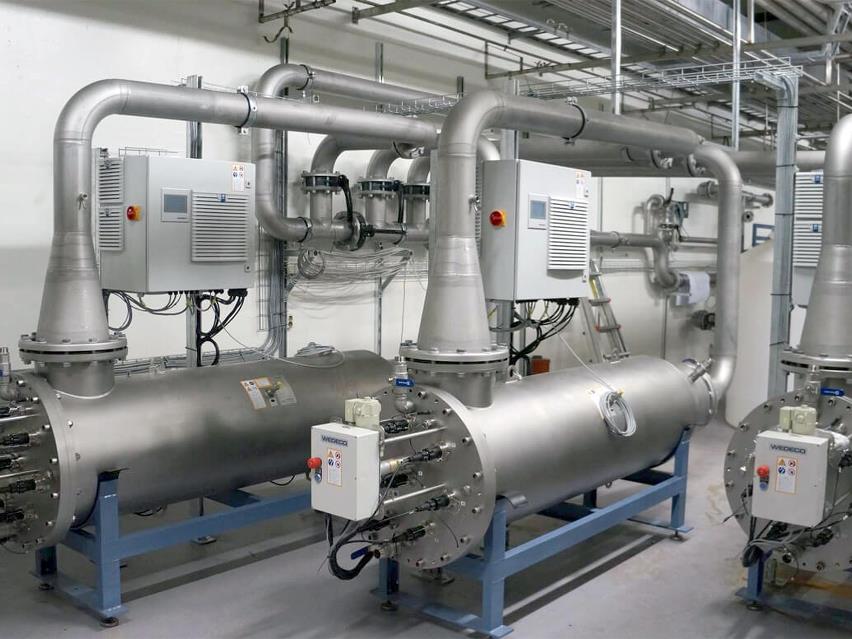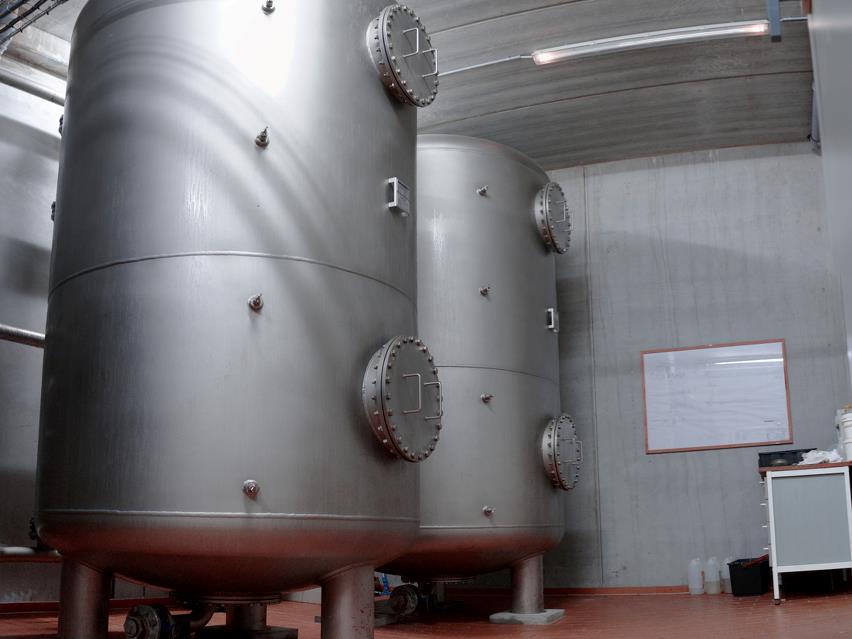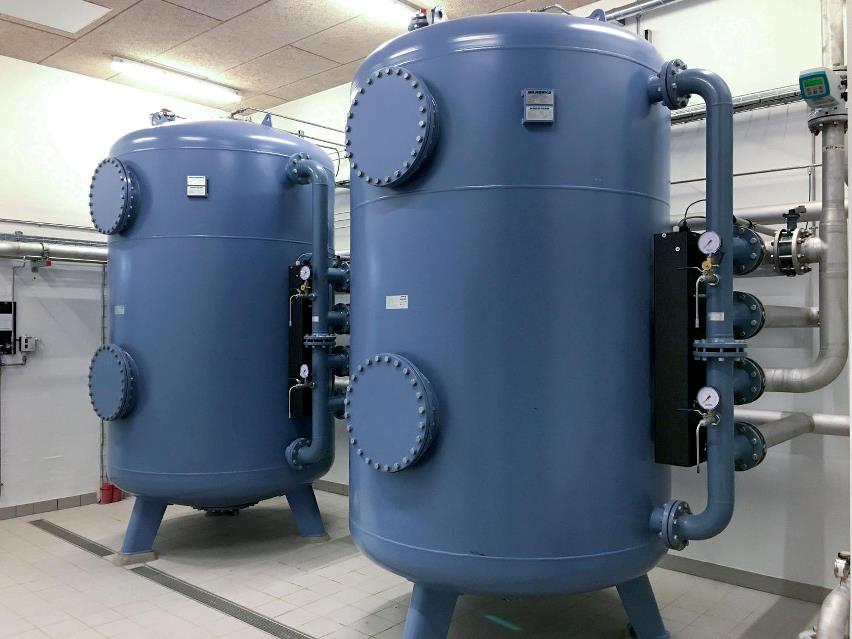A EUROWATER sok évnyi tapasztalattal rendelkezik az ivóvízelőállítás terén. Működésünk során mindvégig alkalmazkodtunk a változó jogszabályi követelményekhez és ügyfeleink igényeihez – és mindezt 1936 óta tesszük. Szakértelmünk a magán vízszolgáltatásokra, települési vízművekre és a saját vízellátással rendelkező iparágakra egyaránt kiterjed.
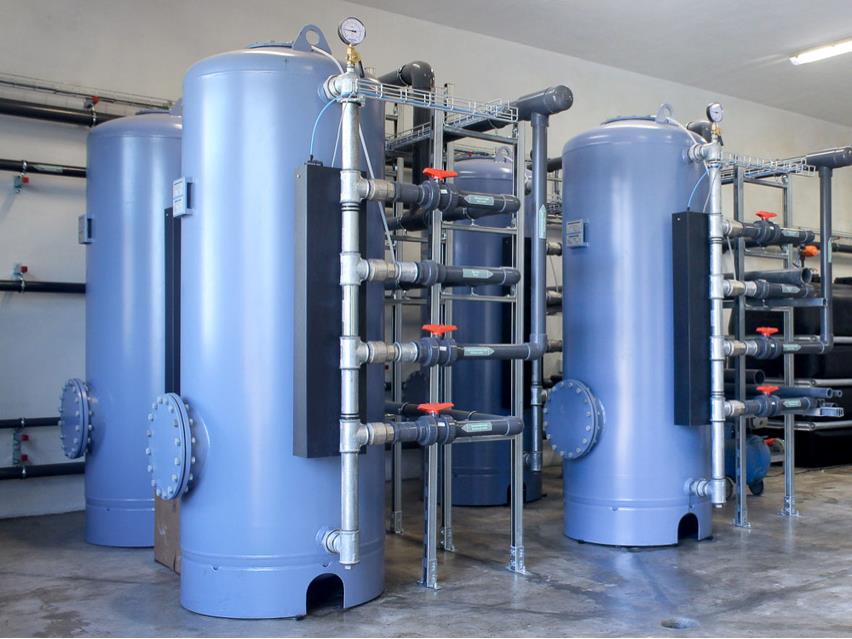
Magán vízszolgáltatás
Számos gazdaság és ház elhelyezkedése miatt nem lehetséges a nagyobb, települési vízműre való csatlakozás. Ezért magán vízkezelési megoldás válik szükségessé az ivóvízminőség elérésére.
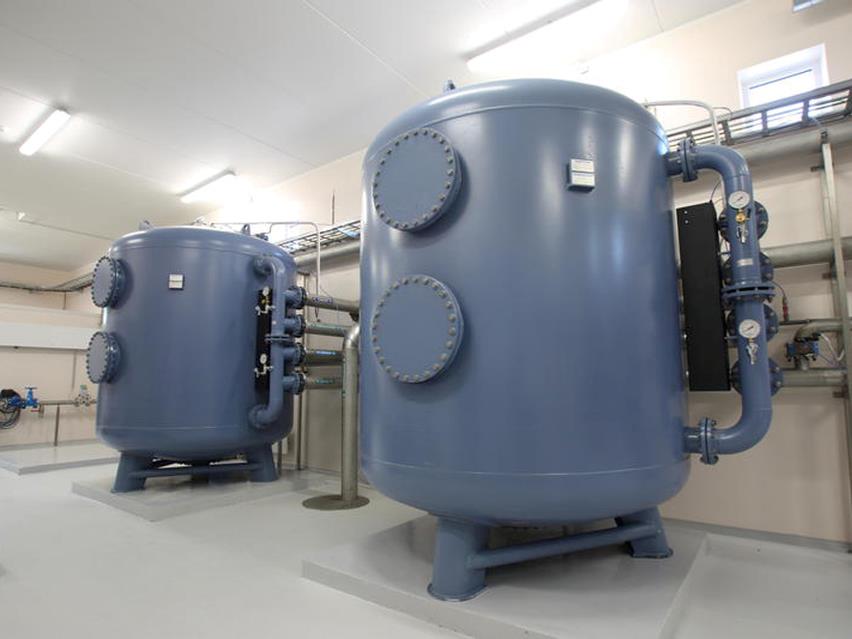
Települési vízművek
A EUROWATER vízkezelési megoldása vegyszermentes, könnyen üzemeltethető, és az év minden napján gondoskodik a tiszta ivóvízről. Ismerje meg az átfogó ivóvízmegoldást.
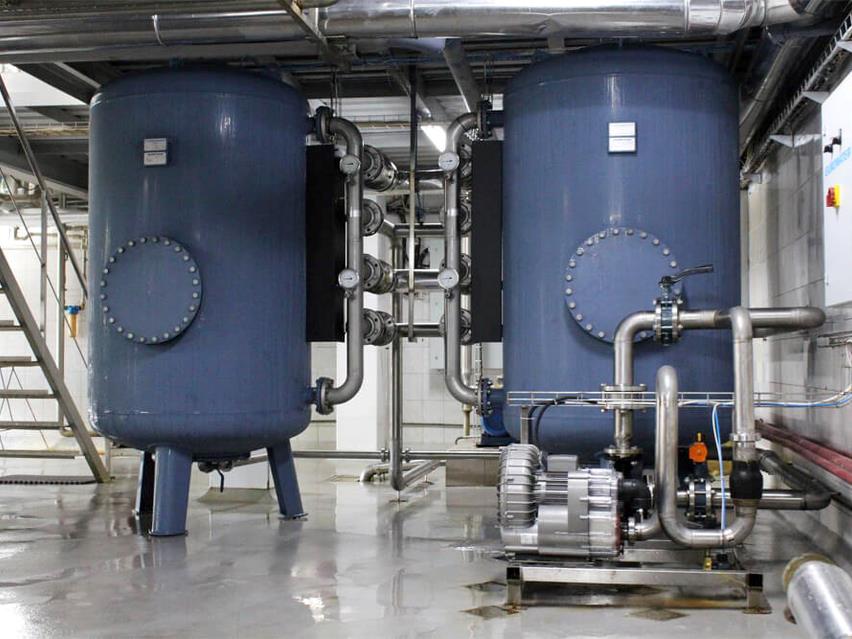
Saját vízellátással rendelkező vállalatok
Számos vállalat saját kisméretű vízművel rendelkezik. A működési megbízhatósághoz szükséges mennyiségű kezelt víz biztosítása céljából.
Miért szükséges a víz kezelése?
A talajvíz és a felszíni víz egyaránt számos természetes sót, szerves részecskét és gázt tartalmaz. Ezek többek között a víz elszíneződését, rossz ízét, baktériumokat okozhatnak a vízben, illetve korróziót a csövekben és szerelvényekben. A EUROWATER nagy tapasztalattal rendelkezik számos szennyeződés eltávolítása terén.
Válassza ki a szennyeződést, és tekintse át a specifikus kezelési módszert
Aggressive carbon dioxideadd
Case
Aggressive carbon dioxide causes corrosion on concrete, pipe systems, and hot water storages in black steel. The corrosion products make the water indistinct and colours it red with corrosion and ochre.
The carbon dioxide is often present in raw water in areas with decalcified stratums of earth. The lack of calcium means that there is no neutralization of the carbon dioxide.
Solution
Aggressive carbon dioxide can be neutralized in a pressure filter plant by means of a calcium-based filter material called Magno-Dol. In special cases, aggressive carbon dioxide can be degassed by heavy aeration.
Ammoniumadd
Case
Ammonium can be a sign of microbacteriological activity in the water and can be a result of fertilization, contamination, or it can be geologically conditioned.
Solution
Ammonium can be reduced by a biological process, in which ammonium is transformed into nitrate via nitrite.
The process calls for a great oxygen demand and sufficient filter material consisting of quartz sand or a porous calcium-based filter material.
Arsenicadd
Case
Arsenic is a natural element and related to certain geochemical environments. Arsenic is found in two forms, As(III) and As(V), of which As(III) is more poisonous, harder to remove from the water, and more widespread.
WHO has assessed that arsenic forms a health risk when consumed and it is thought to be the reason for skin cancer, among other things.
The increased authority demands (lowering of the threshold limiting value from 50 to 5 µg/l when leaving the waterworks) affect many water supplies for which it will be necessary to carry out a special water treatment in order to keep the quality
requirements.
Possible solutions
If the limit value for arsenic in the drinking water is exceeded, a sensible and inexpensive solution is to optimize the water treatment. Arsenic is adhesive to iron and is filtered off with iron. In places without sufficient iron in the raw water for this process, the iron content of the water can be increased by adding iron chloride or iron sulphate and using iron oxide granulates as filter material.
This is an inexpensive solution to the arsenic problem and the method is used when there are small exceeding of the permitted arsenic content. However, this calls for sufficient filter capacity for this extra iron content.
Alternatively, arsenic can be reduced by adsorption filtration in a pressure filter with a special filter material based on iron hydroxide. Dosing with either iron chloride or iron sulphate and the use of iron oxide granulate as filter material are both water treatment solutions that is gaining a footing. EUROWATER offers both solutions and the choice depends on the actual conditions.
Bacteriaadd
Case
In order to measure the amount of bacteria in drinking water, the bacterial count is analyzed. This means the total number of bacteria found by culturing at 22°C and 37°C respectively.
At 22°C, there are bacteria which normally do not cause a disease. The bacterial count at 37°C indicates alien bacteria which often cause diseases. Thus, this count needs to be low. Micro-biological growth which is found in drinking water can consist of among other things bacteria, virus, algae, and fungus.
Solution
The bacteria can be effectively limited by ultraviolet light because micro-organisms are very sensitive to UV light. With a wavelength of 254 nm (nanometer), the UV light kills the bacteria, virus, algae, and fungus by breaking down the DNA of the micro-organisms. UV disinfection can be used for almost all water types.
Hardnessadd
Case
Groundwater often contain a high amount of calcium and magnesium salts which cause hardness in the water. Water softening remove the hardness and prevent scale from forming in pipe systems and plumbing.
Solution
If you require a certain amount of hardness in the water, nanofiltration can provide partial softening and without use of regeneration chemical. Removal of total hardness can be done by a softening unit.
Hydrogen, sulphide and methaneadd
Case
Hydrogen sulphide and methane are present many places in the groundwater and are formed by the decomposition of organic substances under oxygen-free conditions.
Both gasses give cause for different problems for a waterworks. Filters are clogged up by bacterial slime which reduces the content of oxygen and often, bad smell is also an indication of bacteria. In some cases, the bacteria can form hydrogen sulphide and methane.
It is important that all hydrogen sulphide and methane are removed because a residual amount of these gasses in the water will complicate the removal of iron and ammonium afterwards.
Solution
Both hydrogen sulphide and methane can be removed by heavy oxydation of the water. The oxydation takes place by aeration in order to add oxygen to the raw water.
Iron and manganeseadd
Case
Iron and manganese often cause the main problem of the waterworks' due to the substances' discolouring of the washing and sanitation at the consumer. Typical signs of increased iron and manganese content in the water are ochreous or dark water with a metallic taste.
Raw water can contain different types of iron dependent on where in the country you are. Sand filtration is thus not always sufficient. It may therefore be necessary to use other methods in order to ensure continuous iron-free water. These differences cannot be seen in the ordinary analyses but calls for know-how and experience to determine iron type and treatment method.
Solution
After the oxydation, iron and manganese can be filtered through sand filtration. The filter materials used for removing iron are Gravel lll and Nevtraco l.
For removing manganese, Hydrolit-Mn is used. Also, the filter media Demantex has proven to be a very efficient material for manganese removal, even under difficult conditions with low pH values where many other types of filter media are insufficient.
Pesticides, PFASadd
Case
Contamination from pesticides is primarily a result of the use of Caseron G and Prefix G for controlling weeds. The decomposition product 2.6-dichlorbenzamide - BAM - comes from dichlorbenil which forms part of Caseron and Prefix.
Today, waterworks bore wells are analysed for many different types of pesticides and pesticides are found in relatively many waterworks bore wells.
Solution
BAM can be reduced in a pressure filter with a filter material based on activated carbon. Activated carbon is a natural product made from stone, wood, or coconut shell. An activated carbon filter can among other things remove free chlorine, pesticides, and organic solution agents.
Sulphate, chloride, and fluorideadd
Solution
The content of sulphate, chloride, and fluoride in drinking water can be reduced by nanofiltration.
Nanofiltration is applied to purposively reduce unwanted components in full or in part. Nanofiltration applies a pressure typically under seven bar, resulting in lower energy consumption.
Nanofiltration is a membrane technology, which in its mode of operation and construction is very similar to reverse osmosis. A nanofiltration membrane primarily restrains divalent ions and larger molecules.
A talajvízfelhasználás csökkentése
A dániai Aarhus NYE („új”) elnevezésű külvárosa igazán vízbarát városrész. Vízfelhasználásuk 40%-át esővízgyűjtésből és újrafelhasználásból fedezik a toalettöblítésre és mosógépek számára.
A EUROWATER fejlesztette ki és valósította meg a vízkezelési megoldást. Ez a radikális városfejlesztési projekt tanácsadók, magánfejlesztők és a helyi vízmű közös együttműködésével jött létre.
Zöld technológiával a növényvédőszerek ellen
A talajvízben található növényvédő szerek egyre nagyobb problémát jelentenek. A MEM2BIO egy olyan kísérleti projekt, ahol a kutatók zöld technológiát fejlesztenek ki a szennyeződött ivóvíz tisztítására.
A két jól ismert technológia, a MEMbrános szűrés és a BIOszűrés együttes alkalmazása óriási potenciált mutat. A EUROWATER tervezte a kísérleti vízkezelő berendezést.
Természetes folyamat, vegyi anyagok nélkül
A EUROWATER nyomásszűrő berendezései kizárólag olyan természetes folyamatokat alkalmaznak az ivóvíz előállítására, mint az oxidáció és a szűrés. A EUROWATER által alkalmazott megközelítés néhány előnye között a jó munkakörnyezet és a szennyvízproblémák kiküszöbölése említhető.
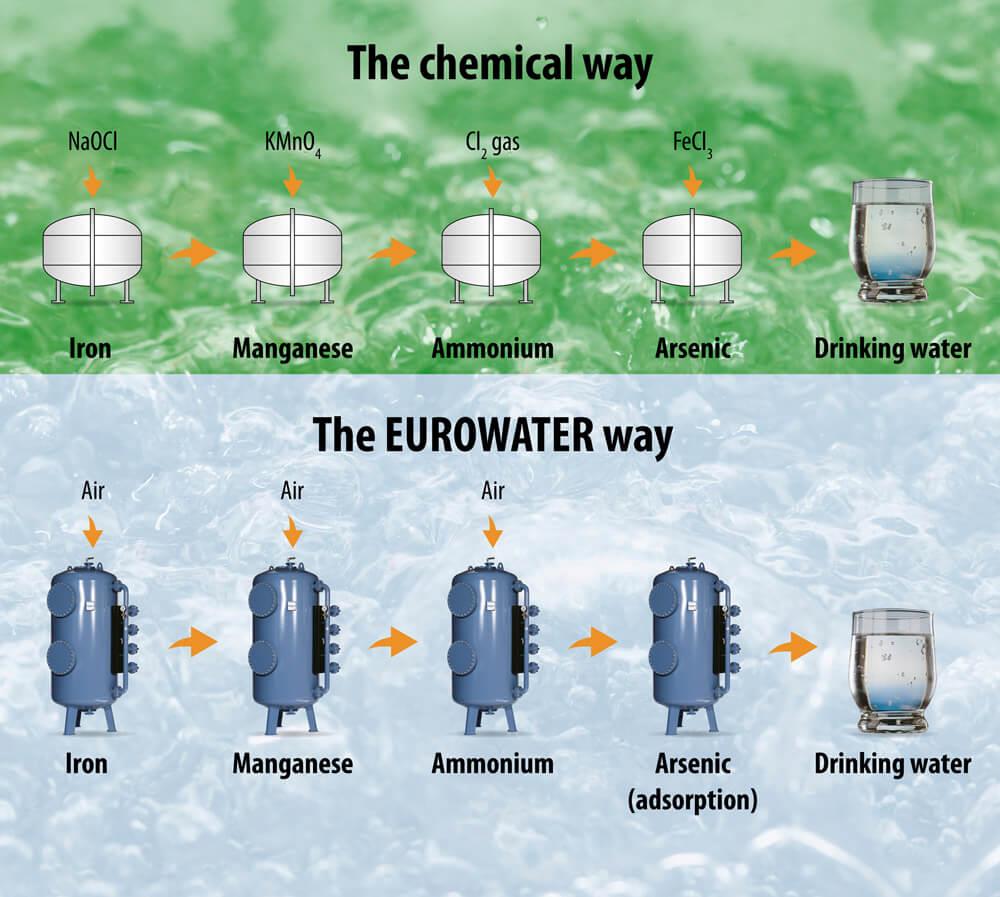
Átfogó ivóvízmegoldás
A biztonság, megbízható üzemelés és automatizáció jellemzi a modern vízkezelési megoldást.
Tudjon meg többet az alábbi illusztrációból.
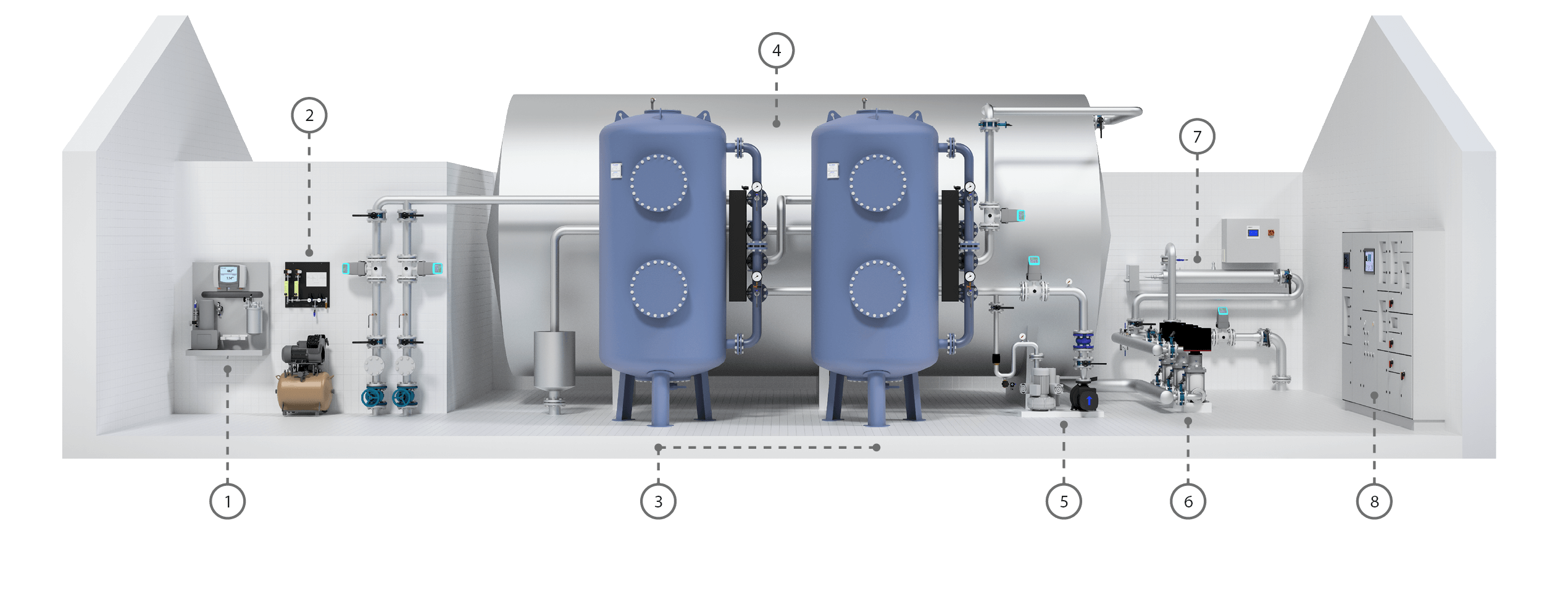
1. Elemző
Elemző a zavarosság, oxigén és hőmérséklet online mérésére. Segít a megbízható üzemelés fenntartásában és a tiszta ivóvíz biztosításában.
2. Levegőztető berendezés
A levegőztető berendezés egy kompresszoregységből és egy vezérlőlevegő rendszerből áll.
3. Nyomásszűrő
Az oxidálás és a szűrés a nyomásszűrő berendezésben történik, ahol a vizet átlevegőztetik, hogy ellássák megfelelő oxigéntartalommal azért, hogy megfeleljen a jelenlegi minőségi követelményeknek. Két nyomásszűrő két független gyártósorként, illetve sorba kötve is üzemeltethető.
4. Tisztavíz-tartály
Oxidálás és szűrés után az ivóvizet a tisztavíz-tartály tárolja, mielőtt elosztásra kerülne a fogyasztókhoz.
5. Légbefúvó és öblítő szivattyú a visszamosáshoz
A szűrőben felgyűlt szennyeződések visszamosással kerülnek eltávolításra. A rendszeres öblítés gyakorisága, intenzitása és időtartama szükség szerint kerül meghatározásra.
6. Elosztás
Az elosztás egy frekvenciaváltós szivattyútelep segítségével valósul meg.
7. UV fertőtlenítés
Az UV-fényes fertőtlenítés hatékonyan képes csökkenteni a mikrobiológiai szaporulatot a vízben. Ez biztonságos és tiszta ivóvizet garantál.
8. Vezérlés
A teljes folyamat vezérlése, szabályozása és ellenőrzése központilag történik egy automatikus vezérlőrendszerről (SRO/PLC).
Az ivóvízkezelésre alkalmazott technológiák
Az ivóvíz előállítása számos technológiát tesz szükségessé a nyersvíz összetételétől függően. A tiszta ivóvíz előállításához leggyakrabban használt három technológiát választottuk ki.
UV fertőtlenítés
A kiváló minőségű ivóvíz létfontosságú, az UV fertőtlenítés pedig kiegészítő biztonsági intézkedés a tiszta ivóvíz biztosítása terén a mikrobiológiai fertőzés kockázatának kizárásával.
Aktívszenes szűrés
Számos országban klór hozzáadását alkalmaznak a víz fertőtlenítésére. A tiszta ivóvíz biztosítása érdekében fontos a klór eltávolítása. Az aktívszenes szűrés a talajvízben található növényvédő szerek eltávolítására is alkalmazható.
Nyomásszűrő
A EUROWATER nyomásszűrő berendezése biztonságos és vegyszermentes megoldás a tiszta ivóvíz előállítására a vas, a mangán, az ammónium és az agresszív anyagok eltávolítása által.
Referenciák
Az ivóvíz kezelése

Hogyan segíthetünk?
Specialistákból álló csapatunk örömmel válaszol az Ön vízkezelési megoldásokkal kapcsolatos kérdéseire.

